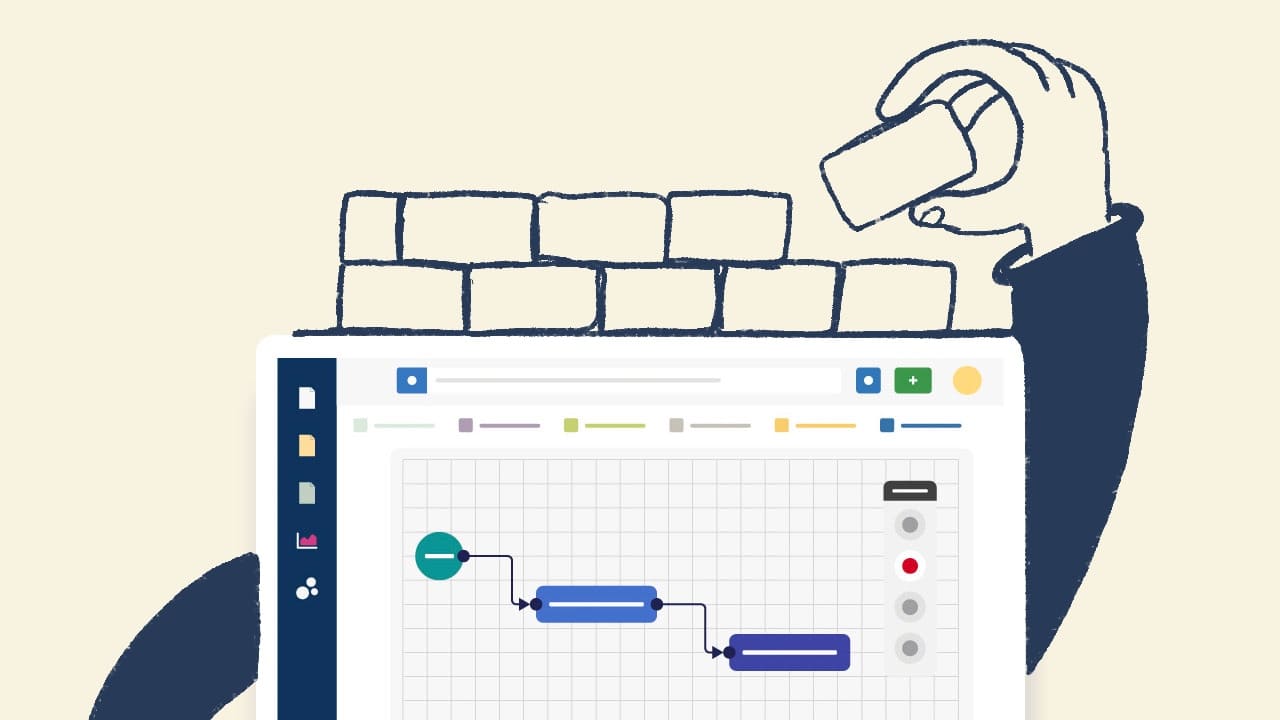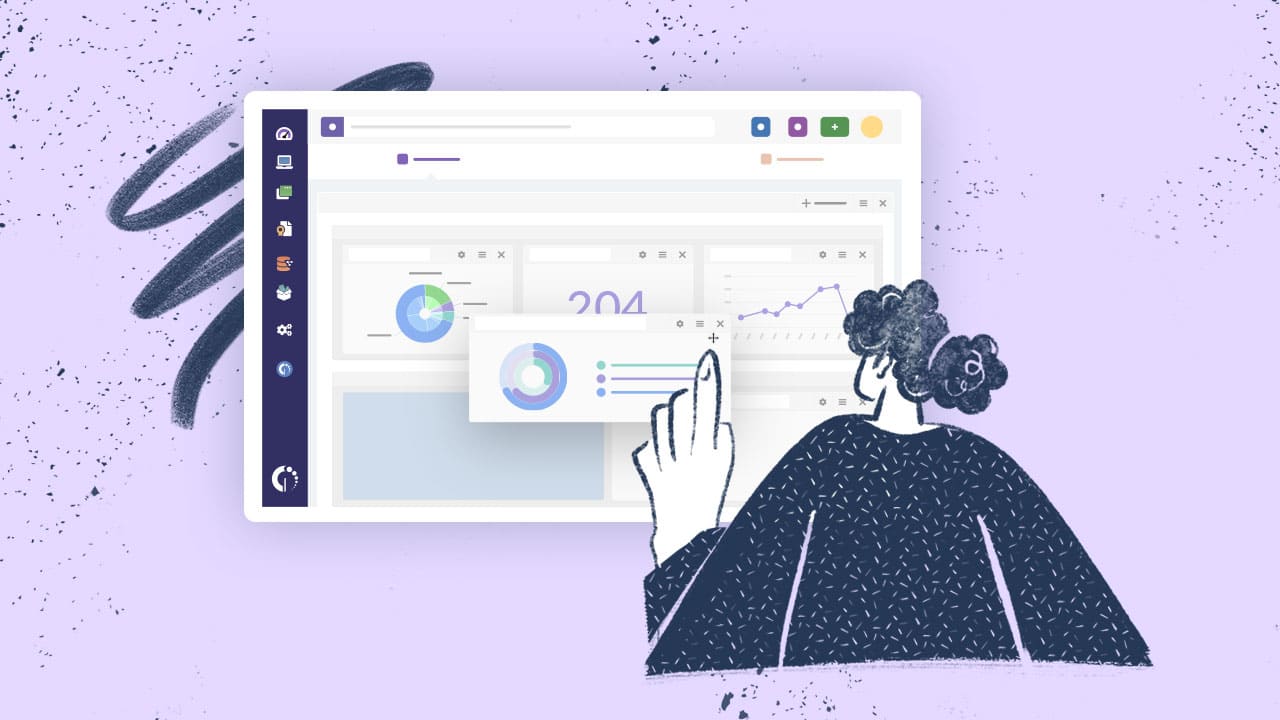Change is an inevitable part of organizational life, but managing it effectively can be challenging. Lewin's Change Model offers a simple yet powerful framework to guide organizations through change.
This model, developed by Kurt Lewin in the 1940s, is still highly relevant today and provides a structured approach to implementing change. By understanding and applying Lewin's Change Model, organizations can navigate change smoothly and ensure lasting improvements.
Read on to discover how this model works and how you can apply it to your organization.


What is Lewin's Change Model?
Lewin’s Change Model is a three-stage process designed to help organizations manage change effectively. So, in a nutshell, it's a Change Management model. Lewin's model consists of the Unfreeze, Change, and Refreeze stages, each addressing different aspects of the change process.
The Unfreeze Stage
The first stage, known as the Unfreeze stage, is all about preparing for change and breaking down the existing status quo before you can build up a new way of operating. Before any change can occur, organizations must create awareness and readiness among employees.
This involves breaking down existing structures, mindsets, and habits that may hinder the change process. Communication is key during this stage, as it helps to explain the need for change and the benefits it will bring.
Steps involved:
-
Communicating the need for change: Clearly articulate why the change is necessary and the potential benefits it will bring.
-
Addressing concerns: Listen to employees’ fears and concerns, providing reassurance and addressing any misconceptions.
-
Creating a sense of urgency: Highlight the risks of not changing and the positive outcomes of embracing change.
The Change Stage
The Change stage is where the actual change implementation takes place. During this phase, new processes, behaviors, and ways of thinking are introduced. It’s crucial to manage resistance carefully and provide support to employees as they adapt to the new changes.
Steps involved:
-
Providing training: Equip employees with the necessary skills and knowledge to handle the new changes.
-
Involving employees: Engage employees in the change process, encouraging their input and participation.
-
Maintaining clear communication: Keep everyone informed about the progress of the change and any adjustments made along the way.
The Refreeze Stage
The Refreeze stage is the final phase of Lewin’s Change Model, where the new changes are solidified into the organization’s culture, establishing a new status quo. This involves reinforcing and sustaining the changes to ensure they become permanent.
Steps involved:
-
Embedding new practices: Integrate new behaviors and processes into everyday operations.
-
Ongoing support: Continue to provide support and resources to help employees adapt to the new changes.
-
Recognizing and celebrating achievements: Acknowledge the efforts and successes of employees in embracing the change.

What are the three major concepts of Lewin's Change theory?
Lewin's Change theory is built around three major concepts: driving forces, restraining forces, and equilibrium.
-
Driving forces: These are factors that push towards change, such as market pressure, technological advancements, or internal goals.
-
Restraining forces: These are obstacles that hinder change, including resistance from employees, lack of resources, or organizational culture.
-
Equilibrium: This is the balance between driving and restraining forces. Change occurs when driving forces outweigh restraining forces, disrupting the equilibrium and moving towards a new state.
Why is Lewin's Change Model important?
Lewin’s Change Model is important because it provides a clear and structured approach to managing change. Its simplicity makes it easy to understand and implement, while its focus on both the emotional and practical aspects of change ensures a comprehensive approach. Key benefits include:
-
Reducing resistance: By preparing employees and addressing concerns, resistance to change can be minimized.
-
Increasing engagement: Involving employees in the change process boosts their commitment and reduces fear.
-
Ensuring lasting change: By reinforcing new behaviors and practices, organizations can sustain changes and prevent regression, leading to successful organizational change.
Status quo and Change Management
What do we mean when we talk about status quo? The status quo refers to the existing state of affairs within an organization, encompassing its processes, culture, and operational methods. In the context of change management, understanding the status quo is crucial as it serves as the baseline from which changes are initiated.
Effective change management involves a structured approach to transitioning from the status quo to a new desired state, ensuring that the organization can adapt to evolving market conditions, technological advancements, and internal dynamics.
Change Management frameworks, such as Lewin's Change Model, emphasize the importance of recognizing and addressing the status quo. By effectively managing the transition from the current state to a new one, organizations can minimize resistance, enhance employee engagement, and ensure that changes are sustainable over time.

Comparing Lewin's Change Model with Lippitt, Kotter, and Rogers Models
Lewin’s Change Model is one of several frameworks used to manage the change implementation process in organizational settings. Here’s a brief comparison with Lippitt’s Phases of Change, Kotter’s 8-Step Change Model, and Rogers’ Diffusion of Innovations.
-
Lippitt’s Phases of Change: Extends Lewin’s model into seven phases, focusing on the role of change agents.
-
Kotter’s 8-Step Change Model: Provides a more detailed, step-by-step approach, emphasizing the need for strong leadership and a clear vision.
-
Rogers’ Diffusion of Innovations: Focuses on how new ideas and technologies spread within a society, highlighting the importance of communication channels and social systems.
While each model has its unique aspects, Lewin’s Change Model is particularly valued for its simplicity and focus on both the human and process sides of change.
Benefits of using Lewin's Change Model
Applying Lewin’s Change Model offers several benefits to organizations. Firstly, it provides a clear and structured approach to change, making it easier to manage and implement.
Secondly, it addresses both the emotional and practical aspects of change, ensuring a comprehensive approach.
Thirdly, the model encourages involvement and collaboration, which can lead to higher levels of employee engagement and commitment.
Finally, by breaking down the change process into manageable stages, organizations can reduce resistance, maintain momentum, and increase the likelihood of successful change initiatives.
Practical applications of Lewin's Change Model
Lewin's Change Model can be applied in various organizational scenarios. Here are two case studies that illustrate its practical applications.
Case study 1: Implementing new technology
A large retail company decided to implement a new inventory management system to improve efficiency.
Using Lewin’s Change Model, they started with the Unfreeze stage by communicating the benefits of the new system and addressing employee concerns.
During the Change stage, they made actual changes to the company's organizational structure, provided extensive training and support to ensure employees could use the new system effectively. Finally, in the Refreeze stage, they reinforced the new processes through continuous support and recognition of employees’ efforts.
As a result, the company saw a significant improvement in inventory accuracy and overall efficiency.
Case study 2: Organizational restructuring
A manufacturing company underwent a major restructuring to streamline operations and reduce costs.
During the Unfreeze stage, the management team communicated the reasons for the restructuring and the expected benefits. In the Change stage, they involved employees in the planning and implementation process, providing clear communication and support throughout.
In the Refreeze stage, they reinforced the new structure through ongoing support and recognition of achievements. The restructuring led to improved efficiency, reduced costs, and increased employee satisfaction.

How can Lewin's Change Model be tailored specifically for IT companies
Lewin's Change Model can be tailored specifically for IT companies by addressing the unique challenges and dynamics of the technology sector. Here's how each stage of the model can be adapted:
Unfreeze Stage
-
Communicate the need for change: IT companies often face rapid technological advancements. Clearly articulate why changes are necessary, such as adopting new software or improving cybersecurity measures.
-
Address concerns: IT employees may have specific fears related to job security or the complexity of new technologies. Engage in open discussions to alleviate these concerns.
-
Create a sense of urgency: Highlight the risks of stagnation in a fast-paced industry, such as losing competitive advantage or falling behind in innovation.
Change Stage
-
Provide training: Equip employees with the skills needed for new technologies or processes. This may include hands-on workshops or online courses tailored to specific roles.
-
Involve employees: Encourage IT staff to participate in the change process by soliciting their input on new tools or systems. This involvement can increase buy-in and reduce resistance.
-
Maintain clear communication: Regularly update teams on progress and adjustments during the implementation of changes. Utilize collaborative tools to facilitate ongoing dialogue.
Refreeze Stage
-
Embed new practices: Integrate new technologies into daily operations, ensuring that they become part of the company culture. This might involve setting up standard operating procedures that reflect the changes.
-
Ongoing support: Provide continuous resources and support, such as helpdesk services or mentorship programs, to assist employees in adapting to new systems.
-
Recognize achievements: Celebrate milestones and successes to reinforce the positive impact of the changes on the organization and its employees.
By tailoring Lewin's Change Model to the specific context of IT companies, organizations can effectively manage the complexities of change while fostering a culture of adaptability and innovation.
Common challenges and how to overcome them
While Lewin’s Change Model is highly effective, organizations may still face challenges when disrupting the status quo. Common challenges include resistance to change, lack of communication, insufficient support and not developing a strategy with designated teams and leaders in charge.
To overcome these challenges, organizations should prioritize clear and transparent communication, involve employees in the change process, and provide continuous support and training. By addressing these challenges proactively, organizations can ensure a smoother and more successful change process.
There is something that we did not address fully in this article: software implementation. This also can be a big challenge. While there isn't just one software specifically designed to implement Lewin's Change Model, there are several alternatives of Change Management software that can support the application of its principles.
Conclusion
Lewin's Change Model provides a valuable framework for managing organizational change. By understanding and applying the Unfreeze, Change, and Refreeze stages, organizations can navigate change effectively and achieve lasting improvements.
Whether you're implementing new technology, undergoing restructuring, or making other changes, Lewin's Change Model can help you manage the process smoothly and successfully. Start applying this model in your organization today and experience the benefits of structured and effective change management.
Frequently Asked Questions (FAQs)
What are the main stages of Lewin's Change Model?
Lewin's Change Model consists of three stages: Unfreeze, Change, and Refreeze.
How can Lewin's Change Model help in managing resistance to change?
The model emphasizes clear communication, involvement, and support, which are key to managing resistance.
What are some examples of successful change initiatives using Lewin's Change Model?
Examples include implementing new technology and organizational restructuring, as illustrated in the case studies.
What are common challenges when applying Lewin's Change Model and how can they be overcome?
Common challenges include resistance to change, lack of communication, and insufficient support. These can be overcome through proactive communication, employee involvement, and continuous support.














.jpg?upsize=true&upscale=true&width=780&height=205&name=ITIL%20Foundation%20Exam%20(2).jpg)
